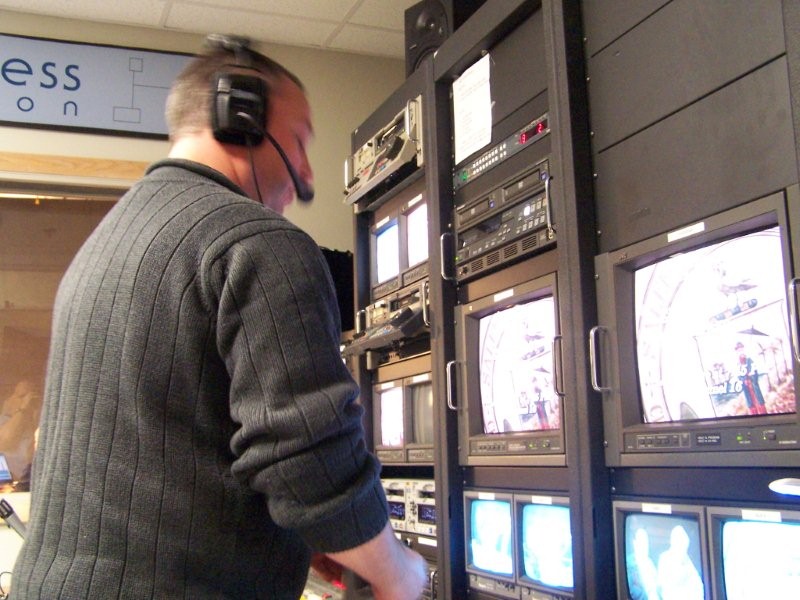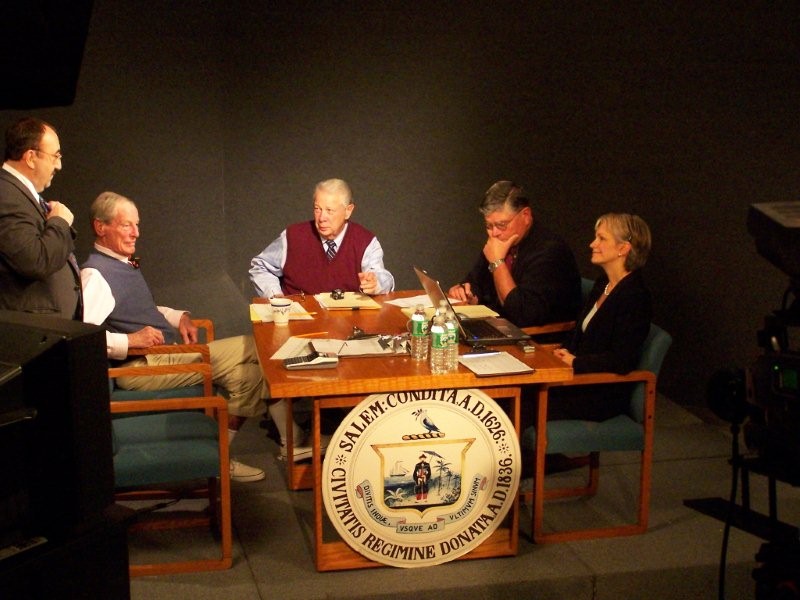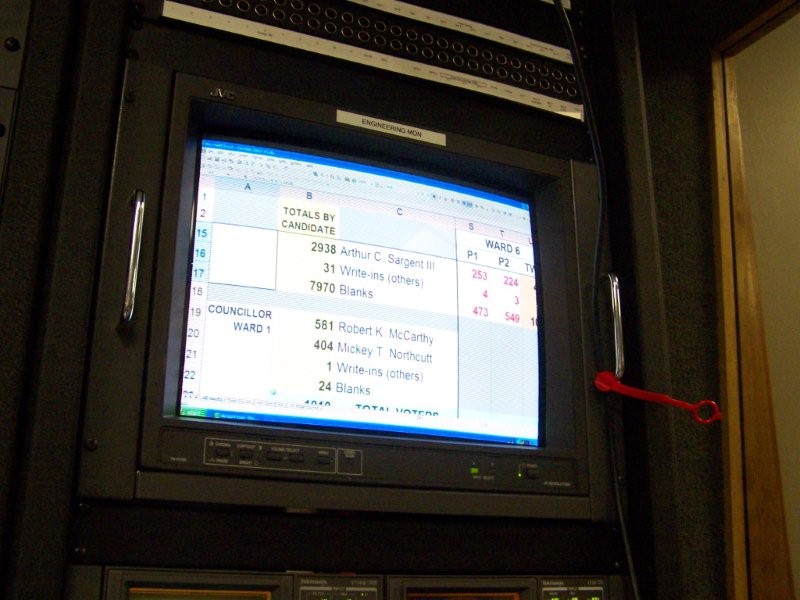My friend Leo is happy today: Jerry Ryan came through his recount and is still the Ward 4 councilor-elect. Leo's a big Ryan supporter; I only hope it works out--I'm a lot more cynical and a lot less enthusiastic about individual politicians than he is. One only has to look at the state house and the parade of low expectations in the corner office to know what I speak of ("Together we can...Casinos! Casinos!")
During this past election, I was very interested in how the Automark voting machines would work and wanted to try one. I could have really used it last year when I was nearly blind from complications from my cataract implant and could barely read the ballot during the gubernatorial election.
This is the Automark:
When a disabled person votes, he or she gets the ballot in the usual way after checking in with the poll workers. The ballot is identical to the ones other voters mark with pens.
The voter feeds the ballot into the machine, and follows the instructions on the screen. There are headphones with audio instructions for the blind.
The voter navigates through the ballot and makes choices through either the touch screen or the navigation keys on the right.
It is straightforward to anyone who has ordered online or made selections on a web page. (There is support for write-ins but I didn't try this so I'm not sure how that works.)
After making selections, you can either commit your ballot or go back to change your selections. Commit your ballot, and the machine will print marks on the ballot and feed it back out to you, where you then put the ballot back in its sleeve and go to the poll workers to turn it in as usual.
It's a transparent process without any of the well-known problems that beset the Diebold machines. The machine worked very well for me.
But I'm concerned. The Commission, and myself, are very interested in how many people take advantage of the accommodations for people with disabilities that we work towards. We often hear the refrain, "but how can we spend money on only a few disabled people!?", and we fight the "tyranny of the majority" all the time.
The Commission wanted to know how many disabled voters used the Automark. Apparently, the machines don't store that information. This is probably because the machine is not a voting machine like the old lever machines but is just a ballot marking device.
For example, If you cast a vote by mistake, you are allowed up to two more ballots (the third ballot counts.) The Automark can't know how many unique voters come up to cast ballots--there is no voter login procedure--but at best, how many ballots were fed through it, and they may not even provide that information.
The other problem with the machines brought to our attention during the last Commission meeting, is that they are heavy, 80 lbs. each, and at one per precinct, there are 14 of these to lug around.
Cheryl LaPointe (our city clerk) and her staff are nothing less than professional, but they were understaffed up to Election Day. Several of us on the Commission offered to volunteer to move the machines for next time, but it's not clear we can legally do that.
I only know three people who used the Automark: myself (the first voter in my precinct to do so), Charlie Reardon and Andrew LaPointe. We don't and perhaps can't know of any other voters who took advantage of the machine.
The state requires these machines so they aren't going away. We'll be using them next for the presidential primary.
Still I worry about some clerk in a town somewhere saying to the state, "The only disabled people in my town are in institutions, why do we all need these machines!"
I'd hate to lose that machine. This past election was the first time I had ever been able to cast a ballot after first being able to read it! Usually, I just guessed at it, knowing that one blob meant "Harvey" and another meant "Deval", or "No on Question N". I'm usually very well prepared before I enter the polls, but low vision is miserably demoralizing.
The Automark works very well.
The right likes to talk about civil rights organizations being obsolete because "they won already!", but this is why I'm on the Commission. We may win our rights but we still have to fight to keep them.





